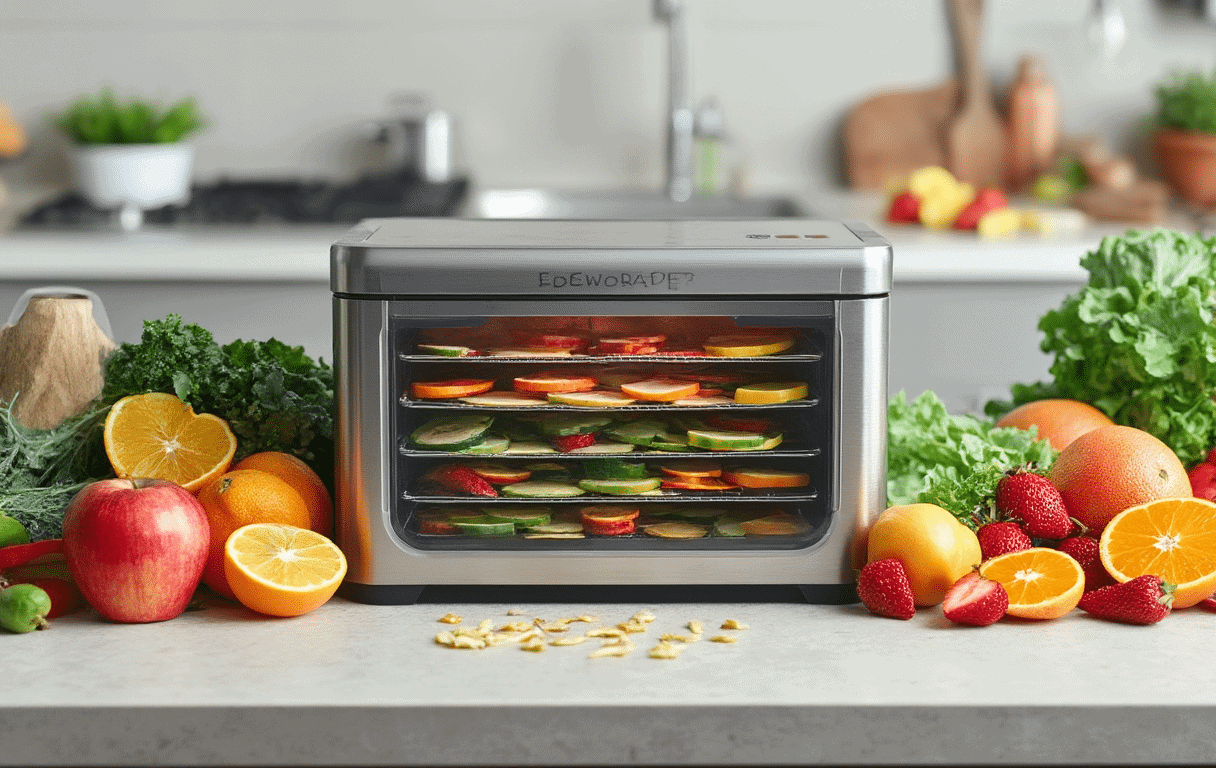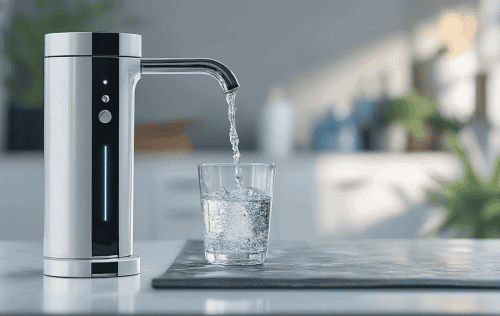Tired of ending up with ineffective food dehydrators?
Many settle for models that compromise on capacity and efficiency.
Don’t make the same mistake.
Dive into our guide to ensure you choose wisely and preserve food perfectly.
Inhaltsverzeichnis
Best Food Dehydrators
- 【HOME FOOD DEHYDRATOR】Aigostar food dehydrator...
- 【FAN MODE, VERISATILE USES】This dehydrator features...
- 【5 TRAYS & EXPANDABLE DESIGN】Made of BPA-free...
- 【ADJUSTABLE TEMPERATURE & TIMER】Empower your drying...
- 【Home Food Dehydrator】The Aigostar food dehydrator...
- 【5-Tier Adjustable Food-Grade Trays】Made of...
- 【Adjustable Temperature and Timer】Take full control...
- 【Easy to Clean and Store】The dehydrator is...
- The Laptronix Food Dehydrator uses a Flow-Drying system...
- Laptronix dehydrator has 5 tiers for conveniently...
- Dehydrating food is practiced around the world as a...
- Ideal for fruits, meats, fish, vegetables, greens,...
- 6 STAINLESS STEEL TRAYS: It comes with durable...
- PROFESSIONAL QUALITY: The powerful, high-grade fan...
- TRANSPARENT WINDOW: With the convenient transparent...
- TOUCH PANEL DISPLAY: Take full control of your...
- 🍏 Precise Drying Control for Perfect Results Easily...
- 🥩 Powerful & Efficient 250W Drying System Removes...
- 🥬 5 Stackable Trays Features five BPA-free,...
- 🐾 Safe & Durable Construction Built with overheat...
Checklist: What makes a great Food Dehydrator
- Capacity: Opt for a food dehydrator with ample space to cater for your needs, whether for small or large batches. Consider models with expandable trays to accommodate increased drying requirements over time, which can significantly enhance food preservation efficiency.
- Airflow System: Choose a dehydrator with an efficient airflow system, ensuring even drying throughout all trays. Horizontal flow models typically provide more consistent results without the need for frequent tray rotation, which aids in food preservation by maintaining texture and nutrients effectively.
- Temperature Control: Ensure the appliance offers adjustable temperature settings. This allows for precise control needed for different types of food, ensuring optimal dehydration without compromising texture or nutrients.
- Ease of Cleaning: Consider dehydrators with dishwasher-safe trays and components. Some models feature non-stick surfaces, simplifying the cleaning process and allowing for more convenient maintenance.
- Noise Level: Check the noise levels of the dehydrator especially if you plan to run it for extended periods. Quieter models are preferable for household use, as they are less likely to cause disturbances.
- Energy Efficiency: Look for models designed with energy-saving features. These will help reduce electricity consumption, making them cost-effective choices for frequent users who rely on the appliance regularly.
FAQ
What should I consider regarding the capacity of a food dehydrator?
Choose a food dehydrator with ample capacity for your needs, considering expandable trays for future increased drying requirements.
How important is airflow in a food dehydrator?
An efficient airflow system is crucial for even drying, with horizontal flow models typically offering more consistent results and reducing the need for frequent tray rotation.
Why is adjustable temperature control important in a food dehydrator?
Adjustable temperature settings ensure precise control for different foods, optimising dehydration without compromising texture or nutrient content.










